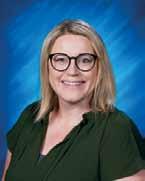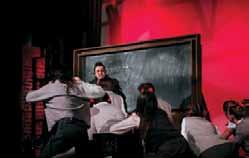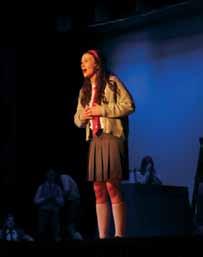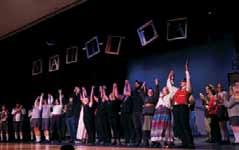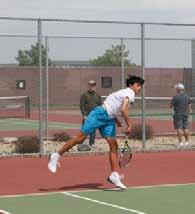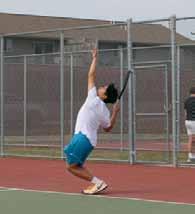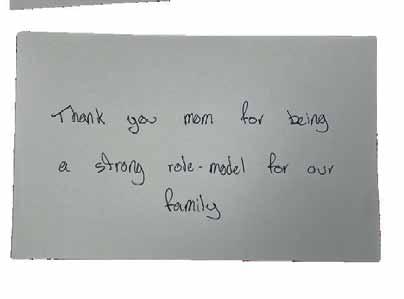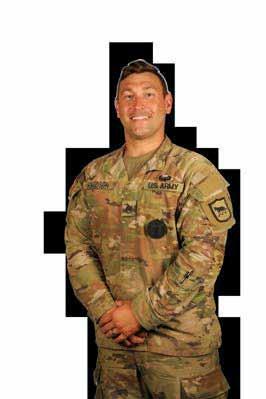

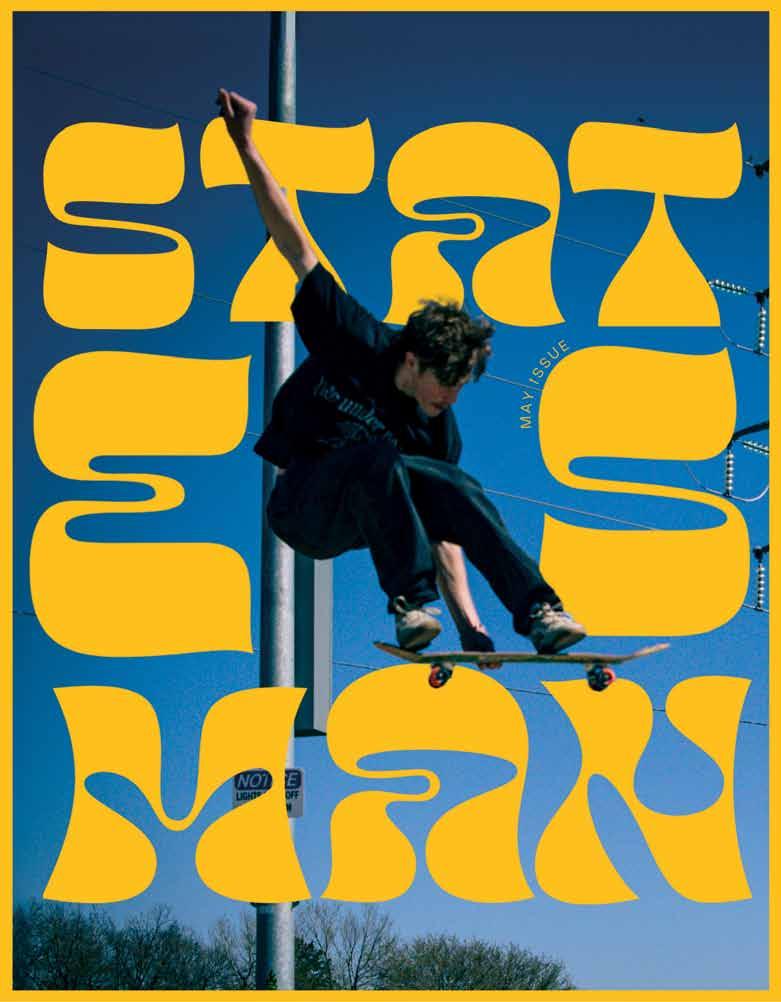




THE LHS AUDITORIUM’S FINAL CURTAIN
Ellie Quinn
CLIFF AVENUE
ROADWORK: PAVING THE WAY TO A BETTER FUTURE
Alonso Ramirez & Sam Barnett
THE REGULARS
Emerson Robertson
DROPPING IN ON LHS SKATEBOARDERS
Joseph Tunge
DISCOVERING FFA: THE HIDDEN GEM OF AGRICULTURAL EDUCATION
Grace Miner
NOTES TO NEW YORK
Ellie Boehrns
MARCHING INTO RETIREMENT
Kinsley Ernster
THE FUTURE OF OUR JOURNALISTS
Ashlyn Hoffman
WALK THE WALK
Addison Remme
CONTINUING THE CONCERTO
Berkeley Newell
TEEN TEACHERS: LHS STUDENTS SHINE IN PEEWEE PATS PRESCHOOL
Lucy Hennies & Trey Raph
NOSTALGIA
Leah Mannes & Stella Sonnichsen
A NIGHT BY THE BAYOU
Laila Miller
Hudson Holman FAST FOOD TO FACULTY
Cooper Schultz EGG ON A ROLL
Julia Hedrick
AUDIBLE AWARENESS: NATIONAL SPEECHLANGUAGE-HEARING MONTH
Bethany Jespersen
MÁS ALLÁ DE LAS PALABRAS: THE ROOTS OF SPANISH IMMERSION
Vivian Kiesow-Knudsen
SUMMER T.B.R.
Khloe Dillman
MR. LHS CANDIDATES: DEBAUCHERY AND SILLINESS
Maddox Raph & JD Yunag
THE PERFECT SLICE
Porter Stangeland
LHS BOYS TENNIS: A REIGN OF DOMINANCE
Nadia Schneider
BASEBALL Q&A
Logan Sanborn
SWINGING INTO THE SEASON
Jacob Wessels
THE HEARTBEAT OF A HOME: MOMS
Adeline Theophilus
EDUCATION: A PURPOSE
BEYOND PRIVILEGE
Chris Tao
TARIFF TROUBLE
Mason Dean
BREAKING SILENCE
Bobby Parker


PAPER EDITORS-IN-CHIEF: Eloise Geraets, Naomi Jespersen, Vivian Kiesow-Knudsen, Ellie Quinn
ONLINE EDITORS-IN-CHIEF: Nadia Schneider, Chris Tao
PHOTOGRAPHY EDITOR: Mason Dean
NEWS EDITORS: Logan Sanborn & Sam Barnett
FEATURE EDITORS: Kinsley Ernster & Berkeley Newell
ENTERTAINMENT EDITORS: Bobby Parker & Dena Tarrell
SPORTS EDITORS: John Quello & Jacob Wessels
PERSPECTIVES EDITORS: Bethany Jespersen & Will Hansen
SOCIAL MEDIA COORDINATOR: Lucy Hennies & Bethel Woche
STAFF WRITERS: Ellie Boehrns, Syri Castilleja, Khloe Dillman, Griffin Etrheim, Lily Gruber, Julia Hedrick, Lucy Hennies, Ruby Hennies, Ashlyn Hoffman, Quinton Hollan, Hudson Holman, Leah Mannes, Laila Miller, Grace Miner, James Plorde, Alonso Ramirez, Maddox Raph, Trey Raph, Addison Remme, Emerson Robertson, Cooper Schultz, Selah Seymour, Stella Sonnichsen, Porter Stangeland, Adeline Theophilus, Joseph Tunge, Elysse Weber, JD Yunag
ADVISER: Dr. Katie Kroeze
said Dr. Laura Raeder.

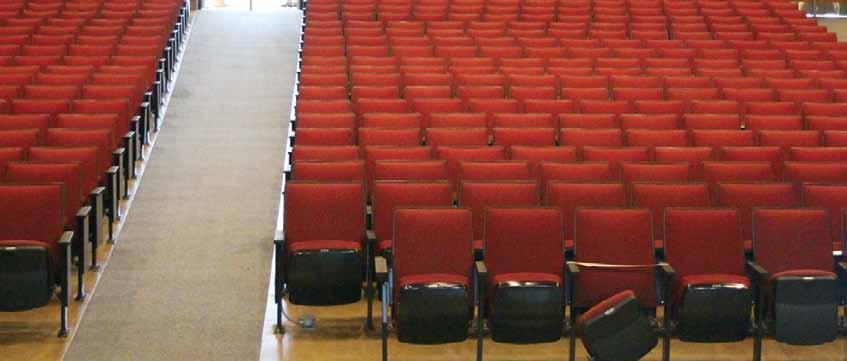

by Sam barnett

will be able to cross the road there,” said Dr. Raeder, LHS principal. “Coming off and on the interstate will be safer with overall a better flow of traffic.”

fter 60 years of use, the LHS auditorium will be under construction this summer in hopes of giving the space a much-needed makeover. The project’s demolition is expected to begin as soon as the school year finishes and is projected to be finished by Oct. 1, 2025.
The reconstruction plans on changing most aspects of the school’s space, including the place of entry into the auditorium, the seats, the stage flooring and the location of the technical booth, with the goal of improving the auditorium’s sound quality. All of these improvements will increase the experience of each audience member.
For maximum audience comfort, a sound study was conducted in the auditorium before constructing the summer’s plan of action. The study found that the shape of the stage causes auditory inconsistencies as different spots in the audience result in dramatically different
listening experiences.
“The stage curves [along the side], and that’s causing some issues with the sound for the audience, and so one of the things they’re going to do is flatten that out,” said LHS principal Dr. Laura Raeder.
Part of the remodel will be moving the technical booth from above the audience to the back of the auditorium. Though this will sacrifice some of the seating available, the new location of the booth will allow technicians to control sound levels from the same plane as the audience, creating a balanced auditory experience.
“You will be able to run the sound from the level [of the audience], not from up [in the booth], so you will get a better, real-world view of what’s going on,” said Dr. Raeder.
While seating will be lost with this decision to move the technical booth, that is not the only area that is sacrificing the number of seats for an improved experience. The orchestral
by ElliE Quinn, Editor-in-ChiEf
pit will be lowered slightly to keep the musicians level with the stage, improving the visibility of the performances when the pit is being used. However, this will also take away a small portion of available seating.
“It will be an eight-inch recess, which doesn’t sound like a lot, but if you look at where our pit musicians sit during the musical, if I don’t have them on stage, they are usually sitting at shoulder height [and] eight inches is essentially a head, so the tops of their heads will essentially be at the stage level,” said LHS theatre director and teacher Brian Hardie.
The current technology requires constant maintenance by Hardie and makes teaching students about technical theater a challenge, so the improvements being made this summer will make educating students on the ins and outs of the technical side of theater easier and a positive experience.
“There is a lot of
Every high school student hates getting up early. What every high school student hates even more is getting up earlier, especially if they do not know why. Recently, students at LHS have been put in this situation with the start of a months-long construction project on Cliff Avenue. Cliff Avenue is directly adjacent to LHS and is the street that a vast majority of LHS students take to get to school every morning, making this project especially problematic. The recent construction has plagued students with varying numbers of lanes each day, forcing them to navigate through the hundreds of cones and heavy traffic just to get to school.
Furthermore, the project is expected to add five extra parking spots for LHS students and visitors. Dr. Raeder believes the outcome will be a net benefit for LHS students.
“I do [believe the project will be a good thing], we just have to live through this chaos,” said Dr. Raeder.
maintenance that goes on in that space that I do that I don’t think people even understand happens, so from my standpoint, it is going to save me a lot of time that I can then focus on other areas,” said Hardie.
The auditorium’s improvements will offer an appropriate framework for the talented work of students at LHS. While watching the fine arts programs has always proven students’ hard work and dedication, the updated auditorium will make them look as high-quality as they perform.
“I think visibility for choir, band and orchestra will be elevated. I think the lighting is going to just make them look and sound better, and the acoustic upgrades are going to improve the way that sound carries in that space. The most exciting thing is that we are trying to reshape the space around our students to match to quality of work that they do on the stage,” said Hardie.
All LHS students are aware of the construction, but very few know what it is actually for. The “Cliff Avenue and I-229 Interchange” project began on April 7, 2025, and has a project value of around $49,915,020. The Sioux Falls city website states that the expected completion date of the project is June 25, 2027, and goes on to explain the various obstructions to the regular flow of traffic that will be caused by the project. These include restricting Cliff Avenue to one lane of direction in various arrangements throughout the next two years, new infrastructure plans and even temporarily closing some of the current entrances to LHS during the summer. When everything is said and done, there will be new on-ramps to the highway, expansions and rearrangements of various streets (including Cliff Avenue) and new pedestrian lights and tunnels.
With a sizable amount of short-term hassle, the project begs the question of whether or not it will be worth it for LHS students. The project is expected to lighten the flow of traffic, as well as improve safety for LHS students crossing the street by adding new stop lights.
“The safety factor, we will have a light to be able to turn and kids
In order to achieve an equal outlook on the project, it is necessary to get views from the students who are being most affected. With the expected increase in traffic, especially when arriving and departing from school, it is not surprising that students may be less fond of the project. Students who live far from LHS may experience the most amount of struggle getting to school. Breyna Priebe, a sophomore who lives in the Tea Area and is open-enrolled at LHS, is forced to get up much earlier, as the construction has significantly disrupted her normal route to school. The construction leads to unpredictability that can cause her to be late, even when she wakes up early.
“I usually get off the interstate on Cliff Avenue, but because of the construction, I have to take Minnesota or go up to 26th Street to get to school, and both of those add a lot of time to my already long route,” said Priebe.
Normally, having to take Minnesota or 26th Street is not much slower; however, because many cars are now using these streets, they are extremely busy and traffic can be slow.
“It kind of sucks. I have to wake up earlier every day,” said Priebe. Clearly, the construction is affecting students in a variety of ways, but many are hopeful that once it is complete, it will lead to safer and more efficient traffic surrounding LHS.







by EmErson robErtson
Recurring
Questions:
1. What is your favorite memory while being a substitute teacher?
2. Why did you become a substitute teacher?
3. How long have you been a substitute teacher?
4. What is your favorite class to substitute for?
substitutes at LHS often get overlooked for the time and dedication they put into the classroom. Substitutes place themselves in tough positions by entering new situations without knowing what is coming ahead. At LHS, there are numerous persistent “stand-in teachers.” Their commitment to LHS means more than most people realize. With new surroundings, new staff, students and maybe a new subject they have never taught, a substitute teacher is an important job.

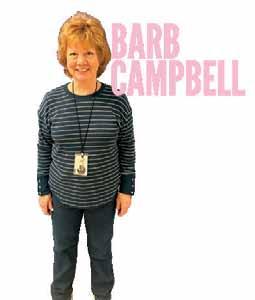

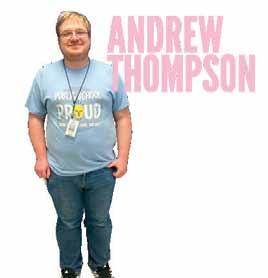
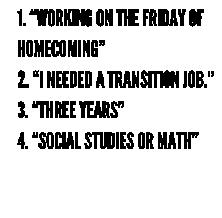



by Joseph Tunge
Learning to skate starts with learning to balance on the board, then comes the Ollie, the Kickflip and eventually more advanced tricks like the Tre Flip. Going through that progression takes countless hours of practice and more than a few hard falls. Plenty of students are inspired to pick up a board after watching skate videos, but only a few stick with it long enough to call themselves true skaters.

Questions:
1. What role has skateboarding played in your life?
2. What sets skateboarding apart from other sports?
3. What is the vibe like at the skatepark?
1. I’ve made a lot of friends skating, but it also gives me something fun to do that’s active.
2. Skating is different because you can do it on your own time and there’s no teams or practices you have to make. You can progress a lot and develop your own style. It’s more laid back and fun than other sports, in my opinion.
3. The community is probably the best part about skating because there’s not much competition, and if people see you struggling with a trick, someone will usually try to help you or hype you up to land it. Everyone wants to see you get better, and you can make friends easily.
Chaise Huether (12)
1. I met so many people through skateboarding. It helps me clear my head from what’s going on in my life.
2. Skateboarding is unlike many sports because you don’t need a team, and it lets your creativity flow with each new trick you learn.
3. We got a good community at the skatepark. Everyone helps others out if they are having problems with a trick. Most of the people are good people, and we are always there for other skaters when needed.


by Grace Miner
by Grace Miner
The heavy traffic, busy restaurants and urban landscape of Sioux Falls contrast the gravel roads, sparse stores and natural landscapes of the numerous rural areas of South Dakota. To combat the gap between the mostly rural South Dakota and urban Sioux Falls, the nationwide Future Farmers of America Organization (FFA) in South Dakota encourages agricultural-related careers for high school and college students by allowing them to participate and learn about different agricultural careers and events.
The heavy traffic, busy restaurants and urban landscape of Sioux Falls contrast the gravel roads, sparse stores and natural landscapes of the numerous rural areas of South Dakota. To combat the gap between the mostly rural South Dakota and urban Sioux Falls, the nationwide Future Farmers of America Organization (FFA) in South Dakota encourages agricultural-related careers for high school and college students by allowing them to participate and learn about different agricultural careers and events.
Right now, the program is in its third year. It is run through the Career and Technical Education (CTE) center and involves all Sioux Falls Public Schools. Students who participate in an agricultural class, such as Small Animal Science, Large Animal Science, Horticulture or Agricultural Leadership at the CTE center are eligible to join. In addition to teaching students valuable agricultural skills, it also furthers students’ life skills, confidence and leadership skills.
Right now, the program is in its third year. It is run through the Career and Technical Education (CTE) center and involves all Sioux Falls Public Schools. Students who participate in an agricultural class, such as Small Animal Science, Large Animal Science, Horticulture or Agricultural Leadership at the CTE center are eligible to join. In addition to teaching students valuable agricultural skills, it also furthers students’ life skills, confidence and leadership skills.
“FFA is a national student organization focused on leadership, personal growth and career success through agricultural education. In our Sioux Falls CTE Academy FFA chapter, students participate in a wide variety of events—from Career Development Events (CDEs) like Livestock Judging and Veterinary Science to Leadership Development Events (LDEs) like Agricultural Sales or Employment Skills,” said Kimberly Martin, the adviser for
“FFA is a national student organization focused on leadership, personal growth and career success through agricultural education. In our Sioux Falls CTE Academy FFA chapter, students participate in a wide variety of events—from Career Development Events (CDEs) like Livestock Judging and Veterinary Science to Leadership Development Events (LDEs) like Agricultural Sales or Employment Skills,” said Kimberly Martin, the adviser for


Students practice year-round to enhance the skills they need to compete at the state conference and other competitions. Students dictate what practice times work best for them, which can prove challenging as FFA involves all Sioux Falls Public Schools. At practices, they bond over their shared passion for agriculture and gain hands-on experiences from raising chickens and pigs and growing plants to being a part of select agricultural classes offered at the CTE center.
Students practice year-round to enhance the skills they need to compete at the state conference and other competitions. Students dictate what practice times work best for them, which can prove challenging as FFA involves all Sioux Falls Public Schools. At practices, they bond over their shared passion for agriculture and gain hands-on experiences from raising chickens and pigs and growing plants to being a part of select agricultural classes offered at the CTE center.
“Practices vary depending on the event or time of year. The hardest part is working with the four to eight different high school time schedules and calendars. It gets complicated, but somehow, we find a way to make it work,” said Martin. “A regular practice includes reviewing event rules, learning content, running through mock scenarios or competitions and giving each other feedback. We also have a lot of laughter and team bonding; it’s a supportive space to learn and grow.”
“Practices vary depending on the event or time of year. The hardest part is working with the four to eight different high school time schedules and calendars. It gets complicated, but somehow, we find a way to make it work,” said Martin. “A regular practice includes reviewing event rules, learning content, running through mock scenarios or competitions and giving each other feedback. We also have a lot of laughter and team bonding; it’s a supportive space to learn and grow.”
Summer Schmaltz, a junior at LHS passionate about agriculture, participated in her first year of FFA this year in livestock evaluation. Despite the struggles that come with learning a new skill, Schmaltz found joy
Summer Schmaltz, a junior at LHS passionate about agriculture, participated in her first year of FFA this year in livestock evaluation. Despite the struggles that come with learning a new skill, Schmaltz found joy
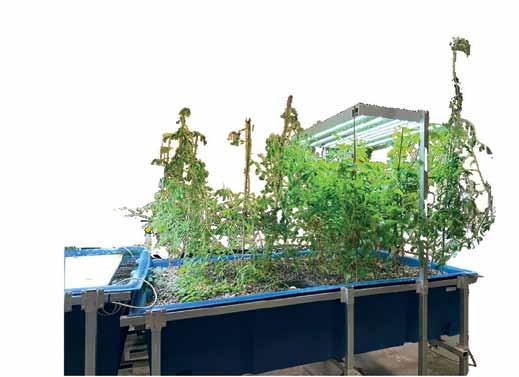

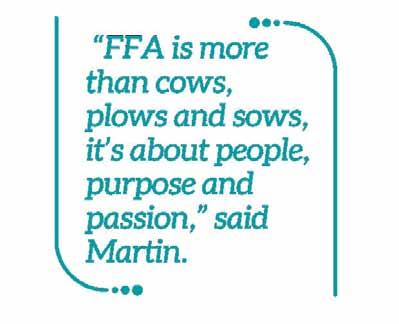





through her passion for agriculture and support from her teammates, culminating in a successful and fun experience at the state conference this year.
through her passion for agriculture and support from her teammates, culminating in a successful and fun experience at the state conference this year.
“Livestock evaluation was something that I’ve never done before. So every week at practice, I was trying to learn new things, and there were some weeks that were bad, but then next week was a new one, and I got to start over and keep learning,” said Schmaltz.
“Livestock evaluation was something that I’ve never done before. So every week at practice, I was trying to learn new things, and there were some weeks that were bad, but then next week was a new one, and I got to start over and keep learning,” said Schmaltz.
The ability to teach students both life and agricultural skills in FFA is cherished by all involved. Although the program is relatively new, Martin hopes to continue to grow the program and see the growth in students that comes from being involved in FFA.
The ability to teach students both life and agricultural skills in FFA is cherished by all involved. Although the program is relatively new, Martin hopes to continue to grow the program and see the growth in students that comes from being involved in FFA.
“My goals include building our program to be as well-known and respected as the other successful extracurriculars at the home schools. I want to expand our participation in state and national competitions, create an officer team and strengthen community involvement through service and advocacy projects. Another primary goal of mine is to help students find their passions, whether that’s in animal science, horticulture, ag
“My goals include building our program to be as well-known and respected as the other successful extracurriculars at the home schools. I want to expand our participation in state and national competitions, create an officer team and strengthen community involvement through service and advocacy projects. Another primary goal of mine is to help students find their passions, whether that’s in animal science, horticulture, ag
mechanics or leadership, and support them in pursuing those interests,” said Martin.
mechanics or leadership, and support them in pursuing those interests,” said Martin.
Despite its current size, FFA has had a large impact on the students involved, inspiring them to grow in confidence and become strong leaders in conjunction with becoming knowledgeable and passionate about agriculture.
Despite its current size, FFA has had a large impact on the students involved, inspiring them to grow in confidence and become strong leaders in conjunction with becoming knowledgeable and passionate about agriculture.
“It’s incredible to watch students gain confidence, find their voice and take on leadership roles they never imagined themselves in. Some come in shy and unsure, but by the time they leave, they’re leading meetings, giving speeches or mentoring younger members. FFA helps students realize their potential, not just in agriculture, but in life,” said Martin. “FFA is more than cows, plows and sows, it’s about people, purpose and passion.”
“It’s incredible to watch students gain confidence, find their voice and take on leadership roles they never imagined themselves in. Some come in shy and unsure, but by the time they leave, they’re leading meetings, giving speeches or mentoring younger members. FFA helps students realize their potential, not just in agriculture, but in life,” said Martin. “FFA is more than cows, plows and sows, it’s about people, purpose and passion.”
by ElliE boEhrns


LHS has taken many trips to New York City in the past few years, there is no doubt about it. From the LHS Marching Band to the Statesman, New York has been busy with high school students bustling in the streets, but for Jacob Noordermeer, it will be called home.
LHS has taken many trips to New York City in the past few years, there is no doubt about it. From the LHS Marching Band to the Statesman, New York has been busy with high school students bustling in the streets, but for Jacob Noordermeer, it will be called home.
Noordermeer is the assistant choral director at LHS and has been part of the music department since August 2020, after graduating from St. Olaf College. His first year of teaching was during the COVID-19 pandemic, so it was a learning curve for both the students and the teachers. The choirs were held in the auditorium, and students were spaced out with five chairs between them while wearing masks. But even with the difficulties, lifelong bonds were formed. Referring to him as “Noordie,” students have come to love seeing him throughout the day. Whether it be in the halls or class, he always knows when to put a smile on someone’s face. Not just the students, but also the staff.
Noordermeer is the assistant choral director at LHS and has been part of the music department since August 2020, after graduating from St. Olaf College. His first year of teaching was during the COVID-19 pandemic, so it was a learning curve for both the students and the teachers. The choirs were held in the auditorium, and students were spaced out with five chairs between them while wearing masks. But even with the difficulties, lifelong bonds were formed. Referring to him as “Noordie,” students have come to love seeing him throughout the day. Whether it be in the halls or class, he always knows when to put a smile on someone’s face. Not just the students, but also the staff.
“The staff here is great; they care about students. There’s just a cool dynamic amongst the staff at LHS and, of course, the students. I’ve only been here for five years, but I feel I’ve been able to develop connections with students over time because we have so many students for multiple years at a time,” said Noordermeer.
“The staff here is great; they care about students. There’s just a cool dynamic amongst the staff at LHS and, of course, the students. I’ve only been here for five years, but I feel I’ve been able to develop connections with students over time because we have so many students for multiple years at a time,” said Noordermeer.
Noordermeer is not just a music teacher, he also helps with multiple different tasks and extra-curricular activities while also directing the cadet choir, a guitar class and three separate ensembles. During the second semester, the ensembles travel to a solo/ensemble contest where they prepare a solo and/or group to perform for judges. Noordermeer helps these students prepare by sectioning time during ensemble periods and having mini-lessons whenever he can during WIN time. Juggling these responsibilities while also co-directing the spring musical and a vocal jazz group, the LHS Red, White and Blues, would be difficult for anybody, but Noordermeer has help.
Noordermeer is not just a music teacher, he also helps with multiple different tasks and extra-curricular activities while also directing the cadet choir, a guitar class and three separate ensembles. During the second semester, the ensembles travel to a solo/ensemble contest where they prepare a solo and/or group to perform for judges. Noordermeer helps these students prepare by sectioning time during ensemble periods and having mini-lessons whenever he can during WIN time. Juggling these responsibilities while also co-directing the spring musical and a vocal jazz group, the LHS Red, White and Blues, would be difficult for anybody, but Noordermeer has help.
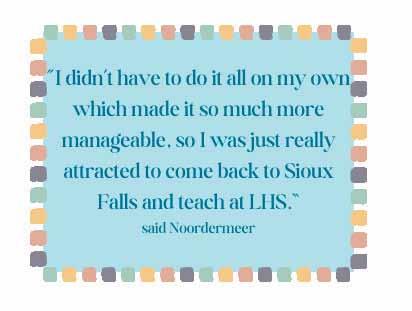

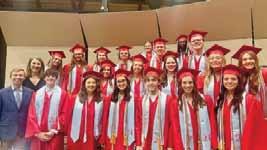

Kathy Ferguson is the head choral director at LHS and directs the concert choir, girls chorale and three ensembles, while also leading the vocal jazz group. She does the same mini-lessons as Noordermeer, and both of them help keep the choir department organized by keeping track of money, helping fundraise, planning trips, coordinating bussing, setting the calendar and planning rehearsals.
Kathy Ferguson is the head choral director at LHS and directs the concert choir, girls chorale and three ensembles, while also leading the vocal jazz group. She does the same mini-lessons as Noordermeer, and both of them help keep the choir department organized by keeping track of money, helping fundraise, planning trips, coordinating bussing, setting the calendar and planning rehearsals.
“It is very all-encompassing; it is a lot to the job,” said Noordermeer. “I think being able, as a new teacher, to learn and be mentored by Mrs. Ferguson in my scenario, but just to be the second person doing what we do, was so helpful as a new teacher and just helped guide me.”
“It is very all-encompassing; it is a lot to the job,” said Noordermeer. “I think being able, as a new teacher, to learn and be mentored by Mrs. Ferguson in my scenario, but just to be the second person doing what we do, was so helpful as a new teacher and just helped guide me.”
But becoming a music educator does not just happen, especially with Noordermeer. Music has been a pivotal part of his lifestyle for many years, breaking a shy kid out of his shell. While it may be daunting to go into music or the arts, it pays off. People look for music in every part of their lives, whether it be the radio playing in the car or a vocalist at a wedding.
But becoming a music educator does not just happen, especially with Noordermeer. Music has been a pivotal part of his lifestyle for many years, breaking a shy kid out of his shell. While it may be daunting to go into music or the arts, it pays off. People look for music in every part of their lives, whether it be the radio playing in the car or a vocalist at a wedding.
“You know, there’s a lot of emphasis when you’re in school on thinking practically about what you’re gonna do in your professional career because you have to support yourself and you have to be able to make money, and I think a lot of times there’s a misunderstanding that a music career will not be supportive of a consistent lifestyle,” said Noordermeer. “There are always opportunities to bring music into people’s lives, so I think it’s a great career. It was a little daunting at first to think about doing that, but it turned out to pay off for sure.”
“You know, there’s a lot of emphasis when you’re in school on thinking practically about what you’re gonna do in your professional career because you have to support yourself and you have to be able to make money, and I think a lot of times there’s a misunderstanding that a music career will not be supportive of a consistent lifestyle,” said Noordermeer. “There are always opportunities to bring music into people’s lives, so I think it’s a great career. It was a little daunting at first to think about doing that, but it turned out to pay off for sure.”
Furthering his music career, Noordermeer is sadly leaving LHS to move to New York. After visiting last summer, he came back telling the stories of Broadway actors and actresses in the spotlight to the choirs and ensembles. In January of this year, he announced his resignation to chase success in New York and be a music assistant or a score supervisor.
Furthering his music career, Noordermeer is sadly leaving LHS to move to New York. After visiting last summer, he came back telling the stories of Broadway actors and actresses in the spotlight to the choirs and ensembles. In January of this year, he announced his resignation to chase success in New York and be a music assistant or a score supervisor.
These people help manage and keep track of changes and create the actual notated, written-out music, primarily for Broadway or musical theater productions off-Broadway. However, Noordermeer is also interested in doing this for a band or arrangers. While it is a difficult career to get into, he is determined to achieve it.
These people help manage and keep track of changes and create the actual notated, written-out music, primarily for Broadway or musical theater productions off-Broadway. However, Noordermeer is also interested in doing this for a band or arrangers. While it is a difficult career to get into, he is determined to achieve it.
“I think it’s very exciting, and I think at the age that I’m at in my life, it will be a great opportunity for me,” said Noordermeer.
“I think it’s very exciting, and I think at the age that I’m at in my life, it will be a great opportunity for me,” said Noordermeer.


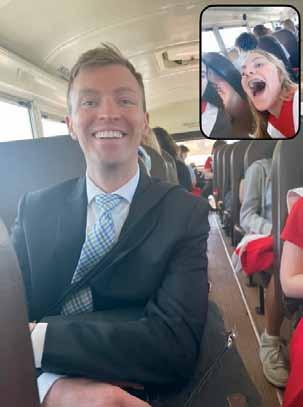
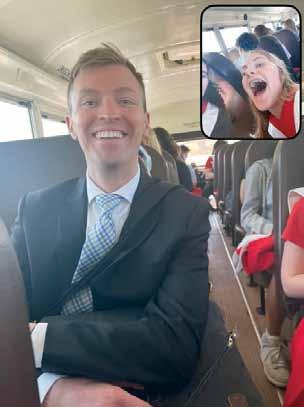
Besides the job, New York is delightful as it is. The diversity of people and environments is very different from Sioux Falls and the flat plains. Noordermeer is planning to live in Upper-Manhattan, a little way out of the chaos of the city and the busy crowds. While it is a scary jump, he does not plan to be there forever. He holds love for Sioux Falls and the people here, but is excited for the opportunities.
Besides the job, New York is delightful as it is. The diversity of people and environments is very different from Sioux Falls and the flat plains. Noordermeer is planning to live in Upper-Manhattan, a little way out of the chaos of the city and the busy crowds. While it is a scary jump, he does not plan to be there forever. He holds love for Sioux Falls and the people here, but is excited for the opportunities.
“It’s hard to know and that’s what’s a little bit scary about making this kind of a jump because I don’t know exactly what the future holds. I don’t see myself living in New York my whole life,” said Noordermeer. “I think it’s very exciting, and I think at the age that I’m at in my life, it will be a great opportunity for me. However, I don’t know what will come after that. I’m kind of open to taking it as it comes. I do love Sioux Falls, and of course, my family is here, and I have so many friends and connections as well. So, it would be a wonderful spot to come back to.”
“It’s hard to know and that’s what’s a little bit scary about making this kind of a jump because I don’t know exactly what the future holds. I don’t see myself living in New York my whole life,” said Noordermeer. “I think it’s very exciting, and I think at the age that I’m at in my life, it will be a great opportunity for me. However, I don’t know what will come after that. I’m kind of open to taking it as it comes. I do love Sioux Falls, and of course, my family is here, and I have so many friends and connections as well. So, it would be a wonderful spot to come back to.”

by Kinsley ernster

gtMaj Bakken has been at LHS for 22 years and has decided it is finally time to take off his boots. Before SgtMaj Bakken started teaching JROTC at LHS, he served in the Marine Corps for 22 years.
“I’ve been in boots for 44 years,” said SgtMaj Bakken. He has been all over the world and served with many different units, giving him years of experience to help him with the role of teaching JROTC at LHS.
During SgtMaj Bakken’s time serving in the Marine Corps he was all over the world, spending time on both coasts and overseas. Over his career he served in Panama and Beirut, Lebanon in 1983, Puerto Rico in 1984, Japan, Okinawa from 1997-2000 and Thailand in 1998. He also was deployed with
his unit out of Hawaii to Saudi Arabia. After that, he was deployed to Kuwait from Aug. 2, 1990 through Apr. 18, 1991 to serve in The Gulf War (Desert Shield/Desert Storm) which started after Iraq invaded Kuwait. SgtMaj Bakken was forced to leave the Marine Corps due to a back injury. When thinking about what his next career would be he thought of teaching. From there he saw an opportunity: LHS was interviewing potential teachers for the JROTC program.
SgtMaj Bakken’s switch from the Marine Corps to teaching JROTC at LHS was not what he planned. He did, however, while in high school, think that one day he might become a teacher.
“I believe that all

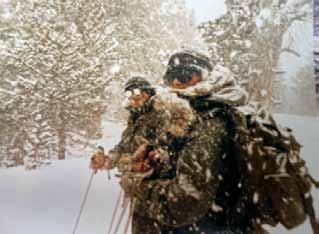
teachers go into teaching because they had a teacher that inspired them at one time or another, and they wanted to give back. For me, it was my ninth grade algebra teacher,” said SgtMaj Bakken.
Along with 22 years of teaching, JROTC has given him many memories that will last a lifetime.
here at Lincoln High,” said SgtMaj Bakken.
Getting to see cadets grow and inspire others is SgtMaj Bakken’s favorite part about being able to teach the JROTC program at LHS.

“There’s been so many [memories]. There’s also been some not so favorable memories that have happened throughout the 22 years. But overall, it’s been a very good environment to work in
“Seeing the cadets grow into good leaders, [their] maturity, being able to inspire other people and to see the unselfishness of the cadets
we have [is my favorite part about teaching the JROTC program],” said SgtMaj Bakken.


Most teachers have goals that they hope to achieve throughout their years of teaching, for SgtMaj Bakken, there is one in particular that he hopes he has achieved.
“I learned this when I was a young Marine; You want to leave the unit you join better than how it was when you started,” said SgtMaj Bakken. “When I got to Lincoln High, I wanted to make the JROTC better or have an impact to make it better than what it was when I started, and that means having a positive impact on people.”
SgtMaj Bakken stands out in the hall almost every

day saying, “good morning” and “good afternoon” to students walking by. One would not think a gesture as small as that would make an impact in a student’s day, but for a new LHS student, it did. The student’s dad noticed the impact and reached out to SgtMaj Bakken to thank him.
“The dad wanted to thank me because it made a difference in his son’s life and made him feel welcome here,” said SgtMaj Bakken.
Many students, staff and even parents can agree that his goal was achieved here at LHS.
“I hope that the cadets that I’ve had the honor and privilege of leading have learned [that] some lessons are harder than others.


I’ve [also] always looked at trying to help them to grow,” said SgtMaj Bakken.
SgtMaj Bakken has decided, after 22 years of teaching and 44 years in boots, that it is time for him to retire.
“I honestly believe that God tells me when it’s time to do stuff. It’s time for me; I still love Lincoln High and the kids and everything else, but I used to be able to juggle nine different things at a time. I can juggle five now,” said SgtMaj Bakken.
“As you get older, you do slow down a little bit. I just feel it’s time for new blood to come in here and dig this program even further.”
SgtMaj Bakken does not have a set plan for what he is going to do after he
retires, but he is set on one thing: growing a beard.
“I am going to grow a beard. 22 years of the Marine Corps, you can’t grow facial hair, and then 22 years here, well, I couldn’t do it with the uniform,” said SgtMaj Bakken.
SgtMaj Bakken is going to miss LHS greatly, mainly because of the students he got the privilege to teach.
“The kids and the students, being able to see them. There is a sense of camaraderie in the building between the teachers, too; you’re part of a team here. First and foremost, I’m not leaving the students, but in a sense I am,” said SgtMaj Bakken.

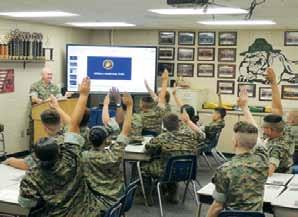

“SgtMaj has been that mentor and that teacher that supported me when I wasn’t at my best in school, [and] he didn’t let my past affect how I would succeed in the program,” said Hansen.
SgtMaj Bakken also had a positive impact on Senior Sawyer Abbott, who has been a part of JROTC for four years.
“He has taught me a lot of things like leadership, confidence, all the things that you wanna learn,” said Abbott.
Senior Cidney Hansen has been a part of the JROTC program for three years. SgtMaj Bakken has been an amazing mentor to Hansen and has supported her no matter what.

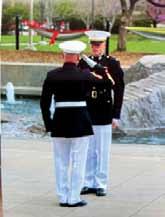
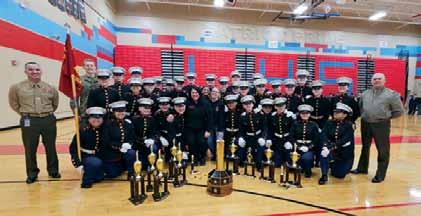


by JD yunag & MaDDox Raph
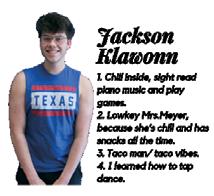




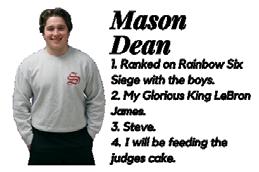

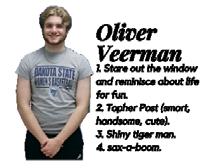

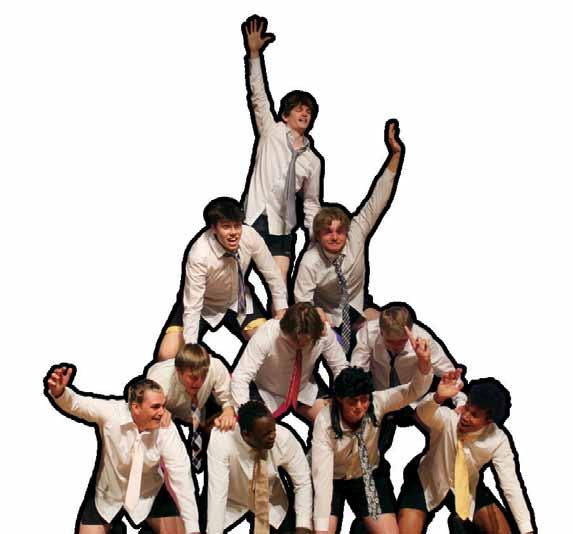
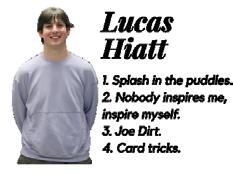
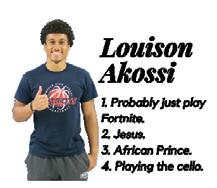

On March 21, 2025, the LHS Statesman was awarded the Columbia Scholastic Press Association (CSPA) Silver Crown Award at Columbia University in New York City. 18 LHS students had the opportunity to attend this trip, enhance their journalism skills, strengthen friendships and leave time to see tourist attractions.
To receive this award, student publications must submit six to 10 example issues to be judged by highly experienced journalists and scholars. According to the CSPA, awards are distributed by excellence in design, photography, concept, coverage and writing. For the year of 2025 specifically, 540 publications from across the world were reviewed and judged, and only 12 of those picked were magazines, including the Statesman. During the convention, students attended various sessions, learning new journalistic skills and getting exposure to controversial topics. Speakers from across the world ranged from high school student editors to writers from the New York Times. One important session, “Scholastic Journalism Education and the Power of Critical Thinking,” featured both the 2024 and 2025 Journalism Teacher of the Year Recipients, NBC Correspondent Rehema Ellis and journalist/educator Esther Wojcicki. The speakers highlighted the power of journalism, its importance and its future in our world. Ellis argues that journalism and skepticism have powered our generation to think sharply but with caution.
“If you are not trained to think critically, it is hard to do that when you are 35,” said Ellis.
Journalism has evolved to be an essential
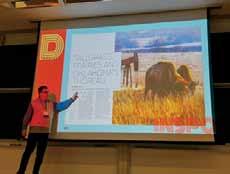
by Ashlyn hoffmAn
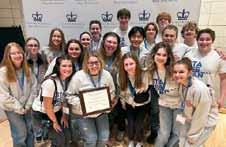
and even inspire her to find the richest and influential stories. Coming from South Dakota, students do not always get a range of diverse opinions, but going to New York introduced topics and experiences that will help students strive for those perspectives in their future stories.
Likewise, speakers also used this convention as an opportunity to share their knowledge and influence student writers.
The editor from the
School magazine, Cahaya Ratomo, hopes to push students to go out of their comfort
part of the education system, teaching students how to determine bias in sources, find balance in writing and be persistent.
“We are critical in what we write, what we read and what we see, so it is critical for journalism students to be discerning of the truth,” said Ellis.
With a large mix of opinions and beliefs, finding unbiased sources is important, and journalism is a gateway to that skill.
In high school classes, most students memorize information, but journalism pushes them to evaluate information and



use it creatively.
Students also attended other sessions that benefited their skills and experience.
LHS junior Ellie Quinn, one of the Paper Editor-In-Chief of the LHS Statesman, claims this convention was a special chance for her to expand her knowledge in journalism.
“I learned a ton of new ways to improve my designs and improve the cohesiveness of our issue as a whole,” said Quinn.
With a hope to pursue journalism in her career, these workshops and sessions will help prove her dedication and experience
zone and write impactful stories. She acknowledges that errors will be made along the way, but that is the most important part. Ratomo wants to leave journalists with a sense of pride. Student journalism is a vital part of social interaction and engagement, but inspires a call to action and awareness. Covering underrepresented viewpoints can bring attention to topics often overlooked by bigger media outlets. It gives a voice to young adults, influencing public opinion and shaping laws catered to younger generations. The skills developed in journalism are transferable to many careers, helping reinforce values of truth and integrity.
With the honor of taking part in this convention, LHS students were presented with a chance to immerse themselves in journalism, learning essential skills that can be used throughout their lives. Being surrounded by passionate professionals can spark ideas and encourage students to achieve more beyond our school communities.
“We have the potential to impact society at large,” said Quinn.





by Addison Remme
Known around LHS for his cheerful demeanor and outgoing personality, it is hard to miss Marshell Byrd. Whether he is found monitoring the halls during passing periods or in the cafeteria keeping students company, he is sure to put a smile on any student’s face.
Besides being known for his bright spirit, he is known by many for his extensive shoe collection. Having started his collection two decades ago, he has amassed nearly 108 pairs of shoes. Byrd started his collection back in 2005 when he was playing football for the Sioux City Bandits and has been accumulating new pairs of shoes to add to his growing collection ever since.

For Byrd, his collection serves many different purposes, the main reason being that he sees shoes as a form of self-expression.
“Shoes can make a person. Putting on a pair of shoes can express your emotions and what you are going through, and that’s how I show how I’m feeling, through shoes… It’s all about expression,” said Byrd. Byrd also makes a great effort to match his shoes with his outfits, and it is quite rare to see him wearing a pair of shoes that do not match.
“Every day without fail, his shoes match his outfit in some sort of way. Most of the time, the color or style of his shoes will match either his shirt or sometimes his hat. It’s always cool to see the different pairs of shoes he wears every day and how he incorporates them into his outfit,” said Jerzi Kool, a senior at LHS.
Comfort also plays a vital role in Byrd’s shoe collection.
“I mean, new shoes make your feet feel good, and comfort is a big thing,” said Byrd. Another purpose of the shoe collection is that many of his shoes have become investment pieces.
“A lot of my shoes are like a stock or an investment. I gain [monetary] value with the shoes I get,” said Byrd. Within his collection, most of his shoes are constantly increasing in value, but some shoes hold more value than others and inflate at a higher rate, like his Kobes.
“Once Kobe passed, his shoes shot up in value, so a pair of $120 you could buy when Kobe was alive probably went up to about $9,000 to $12,000. I have a pair of Kobes called Black History Month that I could probably sell for about $1,200,” said Byrd.
Although many of his shoes hold a large monetary value, to Byrd, they are priceless.
“Most of the shoes I have are shoes that I wanted when I was younger, so now I have them,” said Byrd.

by berkeley Newell



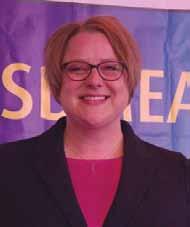





Ass the 2024-25 school year comes to a close, students bid farewell to the familiar hallways of LHS, ready to enjoy their ever-fleeting summer break before being forced to return back in the fall. When they do make their return, they will be greeted by many faces both old and new. Among these will be Kimberly Bogart, LHS’s upcoming orchestra teacher.
the 2024-25 school year comes to a close, students bid farewell to the familiar hallways of LHS, ready to enjoy their ever-fleeting summer break before being forced to return back in the fall. When they do make their return, they will be greeted by many faces both old and new. Among these will be Kimberly Bogart, LHS’s upcoming orchestra teacher.
As many people know, the role of the orchestra teacher here at LHS is a difficult one to fill, especially when likened to Dr. Mario Chiarello. However, Bogart is certainly prepared to rise to the occasion.
As many people know, the role of the orchestra teacher here at LHS is a difficult one to fill, especially when likened to Dr. Mario Chiarello. However, Bogart is certainly prepared to rise to the occasion.
“I hope to give the orchestra students at LHS a challenging, comprehensive orchestra education,” said Bogart. “I hope to provide them with amazing performance opportunities [and] the chance to be exposed to many different styles and genres of high level orchestral
“I hope to give the orchestra students at LHS a challenging, comprehensive orchestra education,” said Bogart. “I hope to provide them with amazing performance opportunities [and] the chance to be exposed to many different styles and genres of high level orchestral music.”
Bogart is certainly no stranger to an orchestra room. She started her orchestral career in high school as a horn player and continued playing all through high school. During her college years, Bogart student-taught string orchestra at Concordia College. This was a part of her post-graduate Master of Music degree, which she holds in horn performance from Indiana University Jacobs School of Music with an accompanying cognate in conducting. After college, Bogart began her teaching career in Hendricks and Ivanhoe, MN, where she was the band teacher for students ranging from grades five to 12, while also leading the drumline, marching band, pep band and jazz band. After some time, Bogart moved to Sioux Falls, where she began teaching fourth through eighth graders string orchestra around the district, a role she has filled for the last 15 years. With her new position here at LHS, Bogart hopes to continue the legacy of the LHS orchestra department while imparting new lessons and knowledge to her students.
Bogart is certainly no stranger to an orchestra room. She started her orchestral career in high school as a horn player and continued playing all through high school. During her college years, Bogart student-taught string orchestra at Concordia College. This was a part of her post-graduate Master of Music degree, which she holds in horn performance from Indiana University Jacobs School of Music with an accompanying cognate in conducting. After college, Bogart began her teaching career in Hendricks and Ivanhoe, MN, where she was the band teacher for students ranging from grades five to 12, while also leading the drumline, marching band, pep band and jazz band. After some time, Bogart moved to Sioux Falls, where she began teaching fourth through eighth graders string orchestra around the district, a role she has filled for the last 15 years. With her new position here at LHS, Bogart hopes to continue the legacy of the LHS orchestra department while imparting new lessons and knowledge to her students.
“I want the orchestra students at LHS to feel at home in the orchestra room, to take chances in their playing and to create and explore,” said Bogart. “I want to facilitate and foster the ambitions and creativity of the fantastic students at LHS, contribute to the stellar school community and culture present within and share their accomplishments and achievements with the Sioux Falls community.”
“I want the orchestra students at LHS to feel at home in the orchestra room, to take chances in their playing and to create and explore,” said Bogart. “I want to facilitate and foster the ambitions and creativity of the fantastic students at LHS, contribute to the stellar school community and culture present within and share their accomplishments and achievements with the Sioux Falls community.”
While taking a new job can be intimidating, Bogart faces a special challenge next year: Filling the large hole left by the retirement of Dr. Chiarello. Known for his slightly unorthodox teaching style and big personality, Dr. Chiarello is leaving an enormous legacy at LHS, and though Bogart is definitely her own person with her own teaching style, she will be an excellent fit both as the orchestra director and in LHS as a whole.
While taking a new job can be intimidating, Bogart faces a special challenge next year: Filling the large hole left by the retirement of Dr. Chiarello. Known for his slightly unorthodox teaching style and big personality, Dr. Chiarello is leaving an enormous legacy at LHS, and though Bogart is definitely her own person with her own teaching style, she will be an excellent fit both as the orchestra director and in LHS as a whole.
“No smiling or laughter until December break. Just kidding! I like to think of my teaching style as approachable and engaging, but serious about the tasks at hand,” said Bogart. “[I believe that] it is much easier to [reach our goals] if we are having fun while doing [it] and [enjoying] the tasks, sort of like ‘Whistle While You Work.’”
“No smiling or laughter until December break. Just kidding! I like to think of my teaching style as approachable and engaging, but serious about the tasks at hand,” said Bogart. “[I believe that] it is much easier to [reach our goals] if we are having fun while doing [it] and [enjoying] the tasks, sort of like ‘Whistle While You Work.’”
In addition to being a responsible educator, Bogart hopes to be someone that students can count on and look up to.
In addition to being a responsible educator, Bogart hopes to be someone that students can count on and look up to.
“[I want students to know that] I am here for them! I am a teacher dedicated to [doing] whatever it takes to help my students succeed and to give them opportunities to showcase their talents. I am passionate about music and teaching and hope my students will be passionate about music and learning about music!” said Bogart.
“[I want students to know that] I am here for them! I am a teacher dedicated to [doing] whatever it takes to help my students succeed and to give them opportunities to showcase their talents. I am passionate about music and teaching and hope my students will be passionate about music and learning about music!” said Bogart.


Pee Wee Pats Preschool is an ongoing tradition that students and teachers at LHS have carried on for over 50 years. The Child Development class taught by Kali Sloup allows students to take on the role of a teacher and learn about what goes into planning a daily lesson.
The class not only allows the high school students to learn essential skills for their possible future careers, but is also essential for the preschool children. The children learn necessary developmental skills that allow them to more easily adjust to preschool life.
Each week, the students get one day to plan out the activities and lessons that will be taught for the rest of the week. Every high school student is assigned a specific day on which they are tasked with creating an engaging lesson for the preschoolers.
“We work on what they will do when they go to preschool. So we do a calendar, learn about the weather, basic math concepts, a letter of the day, and we practice getting to know each other, because there is a lot of research about that,” said Sloup “Then they will have an activity, and they will read their book. Then, they will go to the different pre-play stations, different learning centers that we set up, then, when the second class period comes in, they will do another activity with them, do another book, then we do a closing time.”
The LHS students have plenty to do each day, so they must stay organized and plan thoroughly. Payson Csobor, a sophomore at LHS, has grown a new appreciation for her teachers as she has found that planning a lesson is harder than it looks.

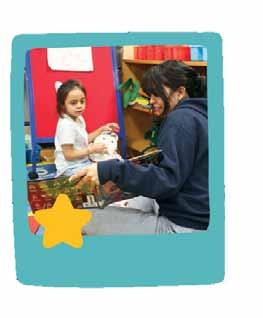
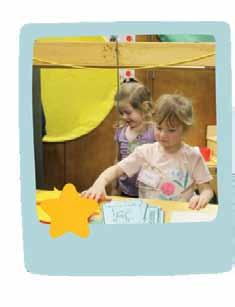
“I love the ability to plan all my lessons, but many times it is hard and makes me realize that it’s not easy being a teacher,” said Csobor.
But with intensive planning comes a reward.
“I love being able to watch the kids enjoy my lesson and being able to bond with them is so powerful,” said Csobar.
Aisha Fajardo-Ortiz, a sophomore at LHS and a member of the child development program, has learned a lot about how to care for children and teach each child differently based on what they need.
“Kids learn at different speeds. With some kids, it’s more difficult to interact with them because they could have listening problems or speech problems. So, with those kids, you might have to be more patient or sensitive,” said Fajardo-Ortiz.
As the school year winds down, the students of child development have grown a great understanding of what it is like to teach, take care of and socialize with preschoolers. The program is helping to educate LHS students and show them what childcare can look like in the real world. It is not just about teaching young kids lessons; students can apply these skills in real-world challenges. Whether it is raising their own children or becoming a teacher in the future, these skills are key.

MAY
is recognized as National Speech-LanguageHearing Month, a time to celebrate individuals who persevere through communication disorders as well as their care professionals. In the United States, around 8% of children from the ages of three to 17 struggle with a wide range of communication difficulties, including fluency or voice disorders, hearing loss and numerous more. All of these hurdles are brought into the light during May. Julie Holiday, a Speech-Language Pathologist, helps students at LHS and beyond to bring their beautiful thoughts into the world of words.
education and health care. Also, it advocates for timely diagnosis and support for communication disorders and the development of assistive technologies, such as advancements in hearing aids for speech-generating devices. Holiday believes anyone can make a difference for this cause by taking small action steps.
by bethany Jespersen
Becoming a SpeechLanguage Pathologist, or SLP for short, is a seemingly specific career choice.
However, Holiday did not always know that she wanted to work in the field of SLP, though helping others has a distinct place in her heart.
“I thought I wanted to be a physical therapist but [I] wasn’t really into it after my freshman year, so while talking with my adviser, he brought up Speech Therapy and after the first semester, I was hooked. My title is SpeechLanguage Pathologist,” said Holiday.
With her position, Holiday wears many different hats. She serves 57 students across LHS and Ben Reifel Middle School. Additionally, for the past two
months, she has been working with 18 kids at Eugene Field Elementary School every Wednesday. Holiday makes an immense impact on students anywhere from six to 20 years old, each with specific attention needs for their communication goals.
“I can help students with articulation difficulties (saying sounds correctly), language (vocabulary, grammar, social language), voice issues, stuttering, using communication devices if they have difficulty with verbal communication and anyone who has an overall difficulty communicating in the school environment,” said Holiday.
Throughout May, SpeechLanguage-Hearing Month provides awareness for SLPs and Audiologists in
“Communication issues can happen at any point in people’s lives. Since I am working in the schools, most of the time we are working with students who have struggled for many of their early years with communication difficulties. If you know anyone who is having difficulty communicating in their daily life, you can recommend that they reach out to a SpeechLanguage Pathologist for early intervention. If someone struggles with their hearing, they can see an audiologist who can help them figure out what is causing it,” said Holiday.
As the public learns more about the meaning behind Speech-Language-Hearing Month, it will lead to a better future for those affected by communication problems. Spreading inclusion and compassion is Holiday’s goal, and she invites everyone to join her.
“The ability to communicate with others is a very basic need. Some students really struggle with it for any number of reasons. I love being able to help people make their wants and needs known to improve their quality of life,” said Holiday.
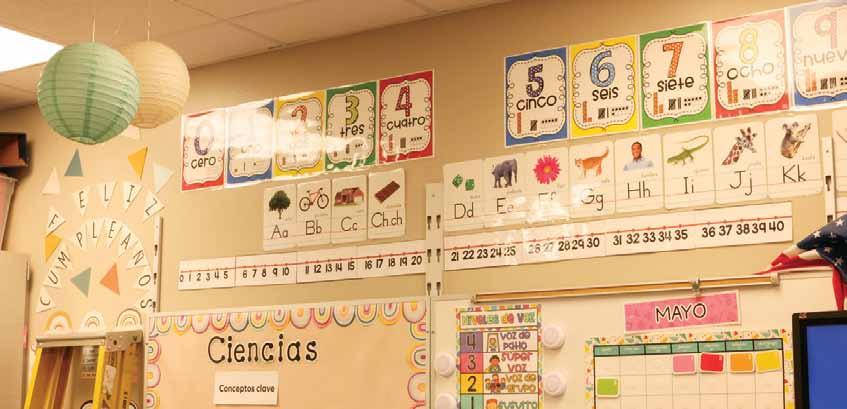

by ViVian Kiesow-Knudsen, editor-in-Chief
Solo en español” is most definitely not an uncommon phrase to hear in a Spanish class. Most often met with the exasperated groans or furrowed brows of middle and high school students, it is difficult to imagine how a kindergartener might receive this request. For many, navigating the first year of school feels like translating a foreign language, and for Spanish Immersion students, it is exactly that. With talks beginning in 2006, the SFSD Spanish Immersion program has grown from a class of 25 students to a current 690. From the elementary to high school level, it offers students the opportunity to fully immerse themselves in the Spanish language, with an end goal of complete fluency. Enrolled students receive the same education and are taught the same
public school curriculum as other students, just entirely in Spanish. Having been thoroughly involved with the coordination of the program in its early stages, Shannon Graber has watched the program take off.
“It’s the time to learn a second language,” said Graber. “Learning a second language is so great to just understand [that] our world is not just one little city—it's the world.”
Because she previously worked as a French immersion teacher in Minneapolis, Graber was invited to participate in discussions focused on increasing district involvement in world language. She felt an immersion program might be the right fit. Dr. Pam Homan, the superintendent at the time, was familiar with the success in Minneapolis and opted in.
“It just kind of blossomed,” said Graber. “I talked to everybody I could talk to and was able to find help [and] gather enough parents. It just started rolling.”
Once the idea had been proposed, the school district took two years to gather students, parents and teachers and form the first section at Rosa Parks Elementary School. The program later expanded to another class of Spanish Immersion students at Robert Frost Elementary School.
In 2016, Sonia Sotomayor Elementary School was opened to bring together students from both schools and house the future of the Spanish Immersion program. Another leading figure in the creation of the program, Dr. Tracy Vik, was appointed as principal.
“We truly have students from
all around the community, including six other school districts as well,” said Vik.
Since its opening, Sonia Sotomayor Elementary has prioritized creating the best possible environment to ensure students are fully immersed in the Spanish language. With teachers from 14 different countries, they are pushed to perceive the world through a hands-on approach.
“You're learning about a whole other culture through example,” said Graber.
In 2022, Sonia Sotomayor was recognized as a National Blue Ribbon School. With efforts like Project Warm Up, diaper drives, soup collections and sock collections, it focuses on emphasizing the importance of service to others.
“[We are] teaching our kids that no matter how young or how old you are, you have the power to positively impact others by your actions and kindness,” said Vik.
The ability to speak, read and write fluently in another language also promises opportunities after graduation. Following the program from Sonia Sotomayor Elementary School to Edison Middle School and LHS, Spanish Immersion students will— hopefully—come out the other end with a working comprehension of the language and an ability to apply it to external endeavors.
“We need bilingual people right here in Sioux Falls: in our schools, in our medical professions, in our labor professions and in food service,” said Dr. Vik. “Being bilingual opens up your world to [a whole new] population.”
The unique constraints that characterize a school like this one also foster a unique community of students, parents and teachers.
Having been 4th graders when Sonia Sotomayor Elementary opened, the 2025


Spanish Immersion seniors represent the 5th graduating class since the program began. There is also something to be said for the relationships formed within and around the program. Having passed through schools, navigated teachers and grown into adults together, Spanish Immersion students often maintain close, uniquely sustained relationships.
“Those aspects or those limits help provide an opportunity for children to have this special community and [for] families to really have strong relationships,” said Vik.
Though sections have gotten bigger as the program continues to grow and develop, these relationships continue to be one of the most appealing and important aspects of the Spanish Immersion program.
“From my experience and from my child's experience, it's invaluable. Immersion programs begin with small children. And that is to me the very best time to learn a language. Not that it can't be learned later, but it's a really great time to learn,” said Graber. “So why not?”

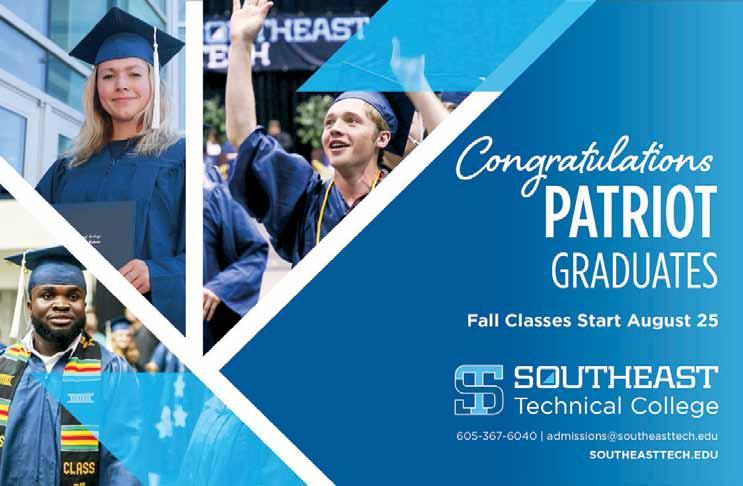




BY KHLOE DILLMAN



Summer is finally approaching—the three months that made the past nine months bearable. But what do you do with all your free time? Most teens tend to run away from reading, whilst others seem to enjoy it. So, if you enjoy reading and are looking to add to your To Be Read (TBR) for the summer, here are some recommended books to keep you occupied.





“The Summer I Turned Pretty” is a very favored series of novels, with three different books written by Jenny Han. The book was such a success that it became a hit television show, which aired in 2022, on Amazon Prime Video. Amazon Prime Video has turned it into a two-series television show with a much-anticipated third season on its way. The show ended up winning the Binge-Worthy Show of the Year at the 2024 People’s Choice Awards. “It’s light and fun but also a good summer read, I like how it’s not too serious,” said LHS sophomore Isabel Gillespie.







“Hunger Games” is a classic series to start with for the summer. It is a five-book series written by Suzanne Collins. Most people have watched or heard of the movies that were based on this book series. The movies were extremely successful, winning over 22 awards. The series is described as a thriller and dystopian fiction. It is an extremely long series, so the books are perfect if you want something to bingeread during the summer. “The series is so intriguing, and it’s nice to also have movies to watch that go with it. The books were not hard to read at all, you just wanted to know what was going to happen next,” said LHS sophomore Johanna Kleinjan.








“Happy Place” by Emily Henry has blown up and is recommended to teens by other teens. The book is described as a light-hearted romance book but also contains extreme emotion. It is not a series or a part of a trilogy, so it is recommended as a short summer read. “The book was an emotional rollercoaster; I enjoyed how the author described each setting, it made me believe I was in the story. It’s a good story to read during the summer or even when you are looking for a quick read to get you excited for the summer,” said LHS sophomore Kenley Berning.









Powerless is a fantasy fiction book that was released in 2023. The series is still ongoing. Written by Lauren Roberts, it is the first book of a three-book series that is still being continued and supplies us with multiple perspectives. Rumor says the series, once completed, will become a television show. The book is extremely intriguing and makes you never want to stop reading and wanting more. This book is highly recommended on “book-tok,” with readers stating they never wanted to put the book down. “This book earned a spot as one of my favorite books of all time; it was absolute perfection from start to finish,” said @bookswithjosie on TikTok.





Getready to make a delicious Margherita pizza, Nara Smith style, with this simple step-by-step recipe. Whether you are new to cooking or have some experience, a simple walk-through can do the trick, from making fresh dough to choosing tomatoes and mozzarella cheese. With just a few ingredients and some key add-ons for personalization, you will have the skills to impress your friends and family with a classic Margherita pizza that is full of flavor. Now let’s dive in and begin!


Before starting, you will need unbleached all-purpose flour, granulated sugar, dry yeast or instant yeast, kosher salt, water, virgin olive oil, pureed San Marzano tomatoes, garlic cloves, black pepper, ParmigianoReggiano cheese, mozzarella cheese and basil.

















In a bowl, whisk together the all-purpose flour, sugar, yeast and salt. Add the warm water and olive oil, and stir the mixture with a spoon until the dough begins to come together.

Now, place the dough onto a well-floured countertop or cutting board and knead it for three minutes. It should quickly form and begin to get sticky. Sprinkle flour on the dough as needed so it does not stick to the surface it is on. After about three minutes, the dough should be smooth, slightly elastic and tacky. Lightly grease a large mixing bowl with olive oil, and place the dough into the bowl.

Cover the bowl with a kitchen towel (or plastic wrap) and allow the dough to rise in a warm, dry area of your kitchen for two hours or until the dough has doubled in size.




Preheat the oven to 550 degrees fahrenheit. As the oven is preheating, assemble the ingredients. In a small bowl, stir the pureed tomatoes, minced garlic, extra virgin olive oil, pepper and salt. Set aside another small bowl with the sliced mozzarella cheese (pat the cheese with a paper towel to remove any excess moisture). Set aside the basil leaves and grated Parmigiano-Reggiano cheese so they are in reach. leaves and


Separate the dough into two equal-sized portions. Place the dough on a large plate or floured countertop, cover gently with plastic wrap, and allow the dough to rest for five to ten minutes.

















Assemble the pizza. Sprinkle the baking sheet with a tablespoon of semolina and a dusting of all-purpose flour. Gently use both hands to stretch one ball of pizza dough into roughly a 10-inch circle. If the dough springs back or is too elastic, allow it to rest for an additional five minutes. The edges of the dough can be slightly thicker, but make sure the center of the dough is thin. Gently transfer the dough onto the semolina and flour-dusted pizza baking sheet.





Drizzle or brush the dough lightly (using your fingertips) with olive oil (roughly a teaspoon). Using a large spoon, add roughly 1/2 cup of the tomato sauce onto the pizza dough, leaving a 1/2-inch or 3/4-inch border on all sides. Use the back of the spoon to spread it evenly and thinly. Sprinkle a tablespoon of Parmigiano-Reggiano cheese onto the pizza sauce. Add half of the mozzarella slices, distributing them evenly over the entire pizza. Using your hands, tear a few large basil leaves, and sprinkle the basil over the pizza. Move the baking sheet with your pizza on it to the oven. Bake for seven to eight minutes, or until the crust is golden and the cheese is bubbling and the edges of the pizza are golden brown. Remove the pizza carefully from the oven with oven mittens, transfer to a wooden cutting board or foil, drizzle the top with olive oil, some grated Parmigiano-Reggiano cheese, and sliced fresh basil. Slice and serve immediately and/or prepare the second pizza.







BY STELLA SONNICHSEN & LEAH MANNES
Growing up, we all face it. Now, we are near the end of it. As we look back on our childhood, we feel gratitude for our past experiences and wish to go back. We feel nostalgia: a wistful or excessively sentimental yearning for return to or of some past period. LHS students are inching farther and farther away from childhood, but recall fond memories of the past:



















































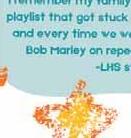












































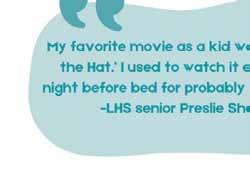

























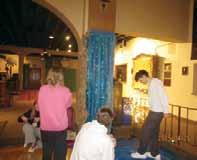

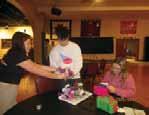
Prom:one of the numerous unforgettable high school experiences. The excitement of prom night gives seniors and their dates a fun event to look forward to amongst the stresses that come with the end of a long school year. It is a day filled with dressing up, eating out, hanging with friends and, of course, dancing.
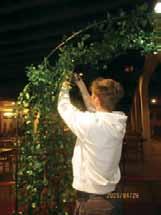
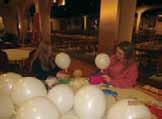



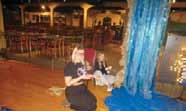
For a handful of seniors at LHS, prom is much more than deciding on what to wear, how to do their hair and where to eat; along with picking out graduation speakers, the senior class officers are in charge of planning prom. Starting at the end of January, the group has met weekly during WIN time and outside of school to make prom the best it can be for their fellow students. The senior officers include president Jackson Klawonn, vice president Charlie Metzger, treasurer Ilee Neemeyer, secretaries Rai Rosa De Sharon, Aidan Prouty, Annabelle Johnson and Tarrent Frye and English teacher Rebecca Mehrens-Peters. VP Metzger decided to apply to become a senior class officer with a desire to have a say in the prom decisions and eager to make this year extremely fun.
Prom took place on Saturday, April 26, from 8-11 p.m. at the El Riad Shrine, with the theme being “A Night by the Bayou.” A new feature this year, which has never been done for past LHS proms, was a live band performance for part of the dance, with one of the band members being LHS senior Tyler Brost’s dad.
This year the prom committee was faced with a couple of difficulties, such as deciding on a theme, working with a tight budget of $2,000 and figuring out decorations.
“Coming up with this theme took some time. We met on several different occasions with many different ideas and ultimately narrowed it down to this. It’s cute, not too niche but still unique and hasn’t been overused as a prom theme,” said secretary Johnson.
Despite their obstacles, the officers were able to overcome these challenges by ordering decorations from Amazon, which offered options that were both of good quality and reasonably priced.
“We got a bunch of greenery like vines and flowers. We also got balloons and warm fairy lights to express the “bayou” experience,” said Metzger.
On the Friday before prom, the officers missed school and spent the whole day setting up and preparing the venue. Senior parents and booster reps helped with the Grand March and juniors were recruited to clean up so the officers could have fun after prom.
Regardless of the countless hours put in and the stressful decisions to make, Metzger does not regret becoming a part of the senior class committee.
“Planning prom was a really fun experience to have because I made new bonds with all the people included,” said Metzger.




BY HUDSON HOLMAN


AAs the end of the school year approaches, students begin to unwind and relax. However, with that comes testing season. Whether students are taking the ACT, SAT, AP tests or just semester tests, they must be prepared for whatever these tests may throw at them. There are many ways to prepare one’s mind for these exams, such as studying, practicing tests and lectures. But on the day of the test, having a nutritious meal can boost their brain to receive higher scores than they could ever imagine themselves getting.
s the end of the school year approaches, students begin to unwind and relax. However, with that comes testing season. Whether students are taking the ACT, SAT, AP tests or just semester tests, they must be prepared for whatever these tests may throw at them. There are many ways to prepare one’s mind for these exams, such as studying, practicing tests and lectures. But on the day of the test, having a nutritious meal can boost their brain to receive higher scores than they could ever imagine themselves getting.
The human brain is a very complex machine, and the need to fuel it properly comes with that. To start, the main fuel for the brain is sugar. Not cheap sugar that comes in candy, but the sugar that comes from complex carbohydrates such as apples, bananas and oats. These foods will keep their energy levels high and keep students feeling satiated throughout their test. In addition, the consumption of Omega-3s is vital to increase brain function. According to Brain Balance Centers, “Omega-3 fatty
The human brain is a very complex machine, and the need to fuel it properly comes with that. To start, the main fuel for the brain is sugar. Not cheap sugar that comes in candy, but the sugar that comes from complex carbohydrates such as apples, bananas and oats. These foods will keep their energy levels high and keep students feeling satiated throughout their test. In addition, the consumption of Omega-3s is vital to increase brain function. According to Brain Balance Centers, “Omega-3 fatty

acids are known to boost brain function, making students alert and better able to concentrate. It also helps keep a steady heart rate, which is very important when the stress and anxiety of test-taking hits.” To take in lots of omega-3s, students must eat fatty fish-like salmon and tuna, or other foods like avocado, nuts and seeds.
acids are known to boost brain function, making students alert and better able to concentrate. It also helps keep a steady heart rate, which is very important when the stress and anxiety of test-taking hits.” To take in lots of omega-3s, students must eat fatty fish-like salmon and tuna, or other foods like avocado, nuts and seeds.
apples, red beans and artichokes.
Finally, the most important yet forgotten resource the brain needs is water. Being hydrated helps reduce anxiety and keeps the brain much more alert and cognitive.

Before they stood at the front of classrooms, teaching students at LHS about the unit circle and WWII, teachers had prior jobs that shaped them into who they are today. From flipping burgers and stocking shelves to waiting on tables, these first jobs offered valuable lessons that impact how they teach. No matter how much that job pays or how difficult it is, there are always valuable life skills to learn.

Questions:
1. What/where was your first job?
2. How long did you work there?
3. How much did you get paid by the hour?
4. What is one valuable lesson/life skill you learned at your first job that you still use today?

memory, which will benefit students immensely on exam day. There are
While complex carbohydrates and omega-3s give the brain energy and keep the stomach full, students will still need other vitamins and minerals to give the brain an extra advantage. Antioxidants are very important for cognition and memory, which will benefit students immensely on exam day. There are two ways to obtain antioxidants: supplements and whole foods.
the most beneficial when obtained through whole foods. Supplements
memory, which will benefit students immensely on exam day. There are the most beneficial when obtained through whole foods. Supplements
real ingredients rather than quick
real ingredients rather than quick
While complex carbohydrates and omega-3s give the brain energy and keep the stomach full, students will still need other vitamins and minerals to give the brain an extra advantage. Antioxidants are very important for cognition and memory, which will benefit students immensely on exam day. There are two ways to obtain antioxidants: supplements and whole foods. According to the Harvard School of Public Health, “Antioxidants are the most beneficial when obtained through whole foods. Supplements appear to do much less than previously thought, so stick to real ingredients rather than quick fixes.” The whole foods students need to eat to get the most positive effects from antioxidants are berries,
According to the Harvard School of Public Health, “Antioxidants are the most beneficial when obtained through whole foods. Supplements appear to do much less than previously thought, so stick to real ingredients rather than quick fixes.” The whole foods students need to eat to get the most positive effects from antioxidants are berries,
For students to best prepare themselves for exam week this year, they must eat a breakfast consisting of berries, bananas, oats, nuts and lots of water. This meal will ensure that they score highly on whichever exam they may be taking.
apples, red beans and artichokes. Finally, the most important yet forgotten resource the brain needs is water. Being hydrated helps reduce anxiety and keeps the brain much more alert and cognitive. For students to best prepare themselves for exam week this year, they must eat a breakfast consisting of berries, bananas, oats, nuts and lots of water. This meal will ensure that they score highly on whichever exam they may be taking.

